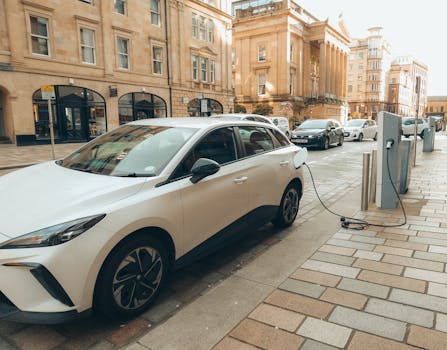Takeaways
The automotive landscape is evolving rapidly, with 2025 poised to be a landmark year for new car models. Key highlights include:
- Advanced electric and hybrid technology
- Autonomous driving features becoming mainstream
- Innovative designs focusing on sustainability
- Integration of smart technology for enhanced user experience
- Emerging trends in connectivity and vehicle-to-everything (V2X) communication
Introduction to the Automotive Evolution
The automotive industry is undergoing a significant transformation as we approach 2025. With an increasing focus on sustainability, safety, and technology, the new cars hitting the market are set to redefine what driving means. This article delves into the anticipated innovations, designs, and technologies that will characterize the vehicles of 2025.
The Rise of Electric Vehicles
As governments worldwide push for greener policies, electric vehicles (EVs) are becoming the norm rather than the exception. By 2025, we can expect to see a substantial increase in the number of EV models available. Major automakers are investing heavily in research and development to enhance battery life, reduce charging times, and improve overall efficiency.
One of the standout features of 2025’s electric cars will be their range. With advancements in battery technology, many new models will offer ranges exceeding 400 miles on a single charge. Additionally, fast-charging stations are becoming more prevalent, meaning drivers can recharge their vehicles quickly and conveniently.
Hybrid Technology: Bridging the Gap
While fully electric cars are on the rise, hybrids remain an essential player in the automotive market. 2025 will see a wider variety of hybrid models that combine the benefits of traditional internal combustion engines with electric propulsion. These vehicles are particularly appealing to consumers who are not ready to make the full switch to electric.
Hybrid technology enables drivers to enjoy better fuel efficiency and reduced emissions while maintaining the convenience of a gasoline engine. With the introduction of plug-in hybrids, drivers can charge their vehicles at home and utilize electric power for short trips, further reducing their carbon footprint.
Autonomous Driving: The Future is Here
Autonomous driving technology is rapidly advancing, and by 2025, we can expect to see more cars equipped with self-driving capabilities. These vehicles will utilize a combination of sensors, cameras, and artificial intelligence to navigate and make driving decisions without human intervention.
The Technology Behind Self-Driving Cars
Self-driving cars rely on sophisticated technology to operate safely. Key components include:
- Sensors: Lidar, radar, and cameras work together to create a 360-degree view of the vehicle’s surroundings.
- Artificial Intelligence: AI algorithms analyze data from sensors to make real-time driving decisions.
- Connectivity: Vehicles communicate with each other and infrastructure to enhance safety and efficiency.
As this technology becomes more refined, we will see a gradual shift towards fully autonomous vehicles that can operate in various conditions, paving the way for a future where human drivers may no longer be necessary.
Safety Features and Regulations
With the rise of autonomous vehicles, safety features will become increasingly sophisticated. Expect to see cars equipped with advanced driver-assistance systems (ADAS) that enhance safety and prevent accidents. Features such as automatic emergency braking, lane-keeping assist, and adaptive cruise control will become standard in many new models.
Regulatory bodies will also play a crucial role in shaping the future of autonomous driving. As the technology develops, laws and regulations will need to evolve to address liability, insurance, and road safety.
Innovative Designs for a Sustainable Future
As consumer awareness of environmental issues grows, automakers are prioritizing sustainable design in their 2025 models. This includes using eco-friendly materials, reducing waste in the manufacturing process, and designing vehicles for recyclability at the end of their lifecycle.
Materials and Manufacturing
2025 is expected to see an increase in the use of sustainable materials, such as recycled plastics and bio-based composites. Automakers are also exploring innovative manufacturing processes that minimize energy consumption and reduce carbon emissions.
The shift towards sustainability is not only beneficial for the environment but also appeals to consumers who are increasingly making environmentally-conscious purchasing decisions.
Car Aesthetics and User Experience
Design is not just about aesthetics; it’s also about the user experience. New cars in 2025 will feature spacious interiors, intuitive controls, and enhanced connectivity options to create a seamless driving experience. Expect to see more minimalist designs that prioritize functionality and comfort.
Infotainment systems will be more integrated, offering voice recognition, smartphone connectivity, and personalized settings to enhance the driving experience. As technology becomes more advanced, the cabin of a car will transform into a high-tech hub where drivers can manage their digital lives on the go.
Connectivity and Vehicle-to-Everything (V2X) Communication
As the automotive industry embraces the Internet of Things (IoT), connectivity will be a major feature in the vehicles of 2025. V2X communication allows vehicles to communicate with each other and with infrastructure, enhancing safety and efficiency on the roads.
The Benefits of V2X Technology
V2X communication offers numerous benefits, including:
- Improved Traffic Management: Cars can share real-time data about traffic conditions, allowing for better route planning and reduced congestion.
- Enhanced Safety: Vehicles can communicate potential hazards to each other, reducing the likelihood of accidents.
- Smart City Integration: V2X technology can facilitate the development of smart cities, where vehicles and infrastructure work together to optimize transportation.
The integration of V2X communication into new cars will play a significant role in the future of urban mobility, making transportation safer and more efficient.
Challenges and Considerations
While the future of cars in 2025 looks promising, there are challenges to address. Issues such as cybersecurity, data privacy, and the need for robust infrastructure will require careful consideration as the industry evolves.
Automakers and policymakers must work together to ensure that as we embrace new technologies, we also protect consumers and create a safe driving environment.
Global Trends Impacting the 2025 Automotive Landscape
The automotive industry is influenced by various global trends that will shape the cars of 2025. From economic factors to changing consumer preferences, understanding these trends is crucial for anticipating the future of driving.
Economic Factors
The global economy plays a significant role in the automotive market. Economic growth can lead to increased demand for cars, while economic downturns may result in reduced sales. Additionally, shifts in oil prices can impact the popularity of different types of vehicles, such as electric versus traditional combustion engines.
As we approach 2025, the economics of car ownership will also evolve. The rise of shared mobility services and subscription models may alter how consumers view vehicle ownership, leading to a decline in traditional car sales.
Consumer Preferences and Values
Today’s consumers are more informed than ever, and their preferences are shifting towards sustainability and technology. As we look towards 2025, automakers will need to keep pace with these changing values.
Features such as fuel efficiency, eco-friendliness, and advanced technology will be key selling points. Additionally, consumers are increasingly valuing transparency and ethical practices in manufacturing, pushing companies to adopt more sustainable and responsible approaches.
Conclusion
As we move towards 2025, the automotive industry is set to undergo a remarkable transformation. With advancements in electric and autonomous vehicles, innovative designs, and a focus on sustainability, the cars of the future will offer exciting possibilities for consumers. Stay tuned as we continue to explore the latest developments in the automotive world.






